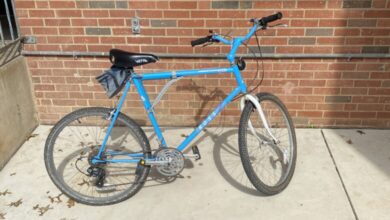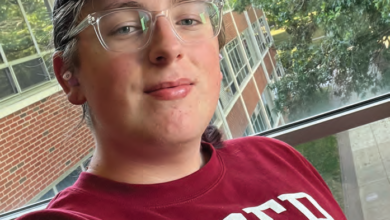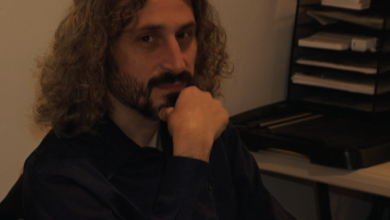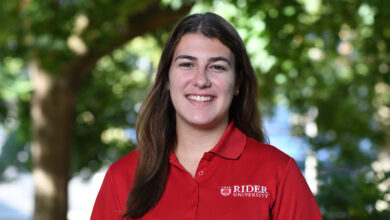Disabled students discuss accessibility at Rider
By Kaitlyn McCormick
The shift from home to campus can be difficult for any student to navigate, but for disabled students, there exists an entirely separate realm of preparation in terms of accessibility and accommodations.
Sophomore elementary education major, Bridget Gum-Egan, who uses a wheelchair as well as a service dog, Sheriff, is very familiar with this process.
“I don’t mind doing this, because I know what works for me, and I know exactly what I’m doing, but not everyone does,” Gum-Egan said.
Every individual’s experiences with accessibility and accommodations are different based on the specific help that they need. Freshman psychology major Noelle Hazel, who also uses a wheelchair, recounts that while her experience with Rider thus far has been “really life-changing … every disabled person’s experience is so different … although we’re all like universally disabled and we share in that, everybody has a different way of dealing with their disability, different accommodations they need.”
Often, the process to reach those needs and accommodations can be exhausting.
At Rider, the Student Accessibility and Support Services (SASS) helps students with a range of disabilities, both cognitive and physical. SASS Director Barbara Blandford explained that the first step in meeting a student’s accommodations is having them fill out a confidential disclosure form so the office can get acquainted with the services they may need. Although this service is helpful, due to the wide expanse of accommodations disabled students may need, the process is not always theeasiest to navigate.
Freshman acting major, Madz Yu-Phelps recounts their experience as being “hectic.”
“I have found people who have helped me, but the getting there process has been … frustrating,” Yu-Phelps said.
Though there are offices and services set up to assist disabled students, those assistances don’t take away from the fact that being in a constant mode of self-advocacy places a taxing burden on the students.
“When you have any kind of disability … it’s like having your phone on 50%. … that’s gonna drain real quick,” said Gum-Egan.
Generally, when it comes to accommodations, aid for cognitive disabilities is much easier to get than for physical disabilities.
Take for example sophomore music major Bella Nakum, who uses they/she pronouns.
“It was very easy to get my accommodations that are based on my cognitive disabilities. … I did find it a little more difficult to get the physical accommodations, more specifically trying to find rooms where I can take my voice lesson,” Nakum said.
Nakum described herself as chronically ill and dynamically disabled, one such facet being difficulty with stairs, so when their vocal lesson was placed on the second floor in a building with no elevator, she was not only inconvenienced, but set behind their peers academically until the issue could be resolved.
Physical accommodations, however, are not always the easiest to accomplish, and because the path to solution involves many different avenues, it can take a while before a disabled student can be accommodated.
“We’re the last line of defense,” said Vice President for Facilities and University Operations, Mike Reca.
“It’s not as simple as just one little thing … because we have to meet so many codes and reasonable accommodation and things like that, it’s, you just can’t go throw a ramp in somewhere you just can’t go put a door opener on something. You have to follow the trail,” he said.
“While I can say I was accommodated easily because my disability is very visible, I do know some people who don’t get their accommodations or things they need so easily,” said Hazel.
While bigger physical accommodations, like ramps and elevators, tend to stay at the forefront of people’s minds, students also point out that smaller issues often fly under the radar.
“Simple things such as signs to show you where the elevators are would be helpful, because, personally with my disability I can’t walk very far, so it’s not always feasible for me to go around looking for the elevator … the physical accessible features will not be useful if the disabled people who need them cannot find them,” said Nakum.
A lot of these smaller improvements are ones that able-bodied people wouldn’t initially recognize as an issue.
“It’s all of these things that people are like ‘I didn’t even know you had to think about that.’ … in the nicest way, why would you?” said Gum-Egan.
Although Rider is trying, to some extent, to meet accessibility and accommodation requirements for their disabled students, there is always more to be done, and a lot of responsibility ends up falling back onto disabled students.
“The basic foundation that’s provided to a lot of people on campus as both faculty students and staff is just not there for people with disabilities, and it’s exhausting to keep having to educate people,” said Gum-Egan.
The main takeaway from these conversations is not only the need for better accessibility and student support on campus but also more conversation about disability in general.
“Disability, as a whole, just needs to be treated better by the general public. I do think this is a societal issue, and I think it’s just extending into what’s happening on campus,” said Nakum.
Yu-Phelps put it best: “Disability is not a bad word … I’m proud to be disabled.”



